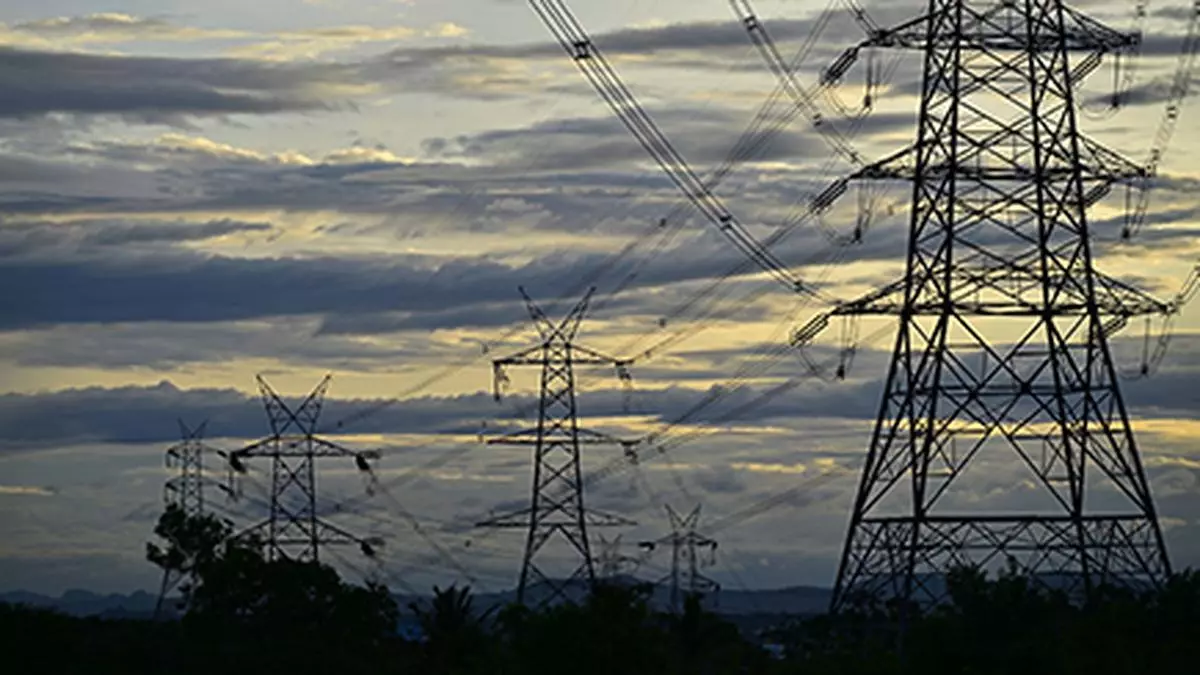U.S. private forecaster AccuWeather said on Wednesday that estimated damage and economic loss from the California wildfire, already one of the worst in history, is over $50 billion at a preliminary level.
Raging wildfires in Los Angeles killed at least two people, destroyed hundreds of buildings and stretched firefighting resources and water supplies since they began on Tuesday, with fierce winds hindering firefighting operations and fueling the fires.
AccuWeather, which estimates the loss between $52 billion and $57 billion, added that if the fire spread to densely populated neighborhoods the current estimates for loss would have to be revised upward.
A view as wildfires swept through Altadena, California, U.S. January 8, 2025.
| Photo Credit: ZAYDEE SANCHEZ
“Should a large number of additional structures be burned in the coming days, it may become the worst wildfire in modern California history based on the number of structures burned and economic loss,” AccuWeather Chief Meteorologist Jonathan Porter said.
AccuWeather’s estimates for total damage and economic loss from the 2023 Maui wildfires were between $13 billion and $16 billion.
J.P. Morgan believes that insured losses originating from the wildfire could be around $10 billion, the brokerage firm said in a note.
Flames rise in a structure as the Palisades fire burns in Malibu during a windstorm on the west side of Los Angeles, California, U.S. January 8, 2025.
| Photo Credit: RINGO CHIU
“We expect a majority of the losses to be related to homeowners’ coverage and a significantly lesser amount to commercial,” they added.
Property consultant CoreLogic estimates that there are over 456,000 homes, with nearly $300 billion in reconstruction value, at moderate or greater risk within the Los Angeles and Riverside metropolitan areas.
However, this number represents the areas at risk in general and not linked to the ongoing fire event. (Reporting by Pritam Biswas in Bengaluru; Editing by Alan Barona)
Scientists on wildfires
Scientists said the wind-whipped wildfires tearing across the arid Los Angeles landscape mark the latest in climate-fuelled weather extremes that are likely to escalate further as global temperatures continue to climb.
Erupting well outside of the traditional wildfire season, the California blazes were spreading quickly on Wednesday.
A house burns as powerful winds fueling devastating wildfires in the Los Angeles area force people to evacuate, at the Eaton Fire in Altadena, California, U.S. January 8, 2025.
| Photo Credit: DAVID SWANSON
For California, scientists now consider fire to be a yearlong risk. The western U.S. state has also seen increasingly massive conflagrations in recent years, with more acreage burned amid drying conditions and shifting weather trends.
Edgar Hernandez waits outside the Pasadena Humane Society to surrender his cat, after evacuating his home in Altadena, as wildfires in the Los Angeles area forced people to evacuate, in Pasadena, California, U.S. January 8, 2025
| Photo Credit: ZAYDEE SANCHEZ
“Climate change is reshaping the regimes – the characteristic patterns of wildfire in a region,” said Kimberley Simpson at the School of Biosciences at the University of Sheffield.
Within hours of weather alerts warning of extreme winds and dry conditions in the L.A. area Tuesday night, parts of the iconic desert city were ablaze.
Vehicles and a house burn as powerful winds fueling devastating wildfires in the Los Angeles area force people to evacuate, at the Eaton Fire in Altadena, California, U.S. January 8, 2025.
| Photo Credit: DAVID SWANSON
Sparks jumped highways and set rooftops alight. Palm trees flared up like matchsticks against the night sky. By Wednesday morning, tens of thousands of people were fleeing their homes as the fires burned out of control.
Water runs short
Crews battling multiple wildfires that raged across Los Angeles on Wednesday were up against a near-perfect storm: intense wind, low humidity and, most troubling for residents, inadequate supplies of water to contain the blazes.
Los Angeles authorities said their municipal water systems were working effectively but they were designed for an urban environment, not for tackling wildfires.








Leave a Comment